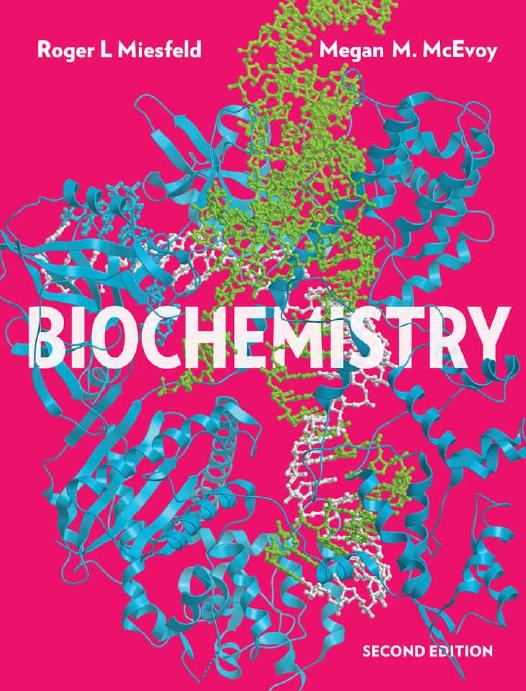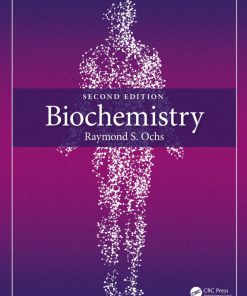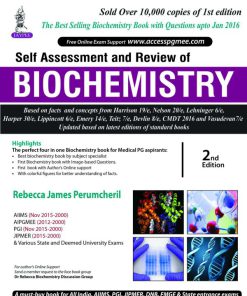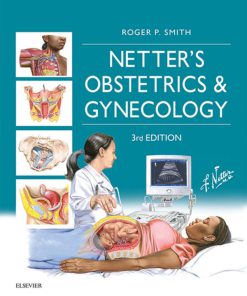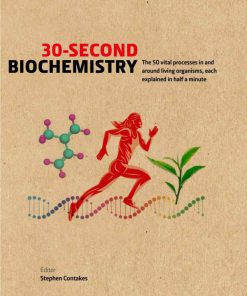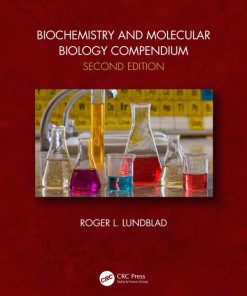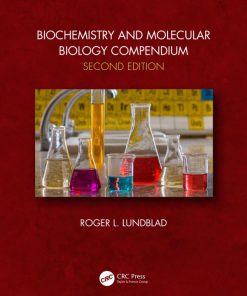(Ebook PDF) Biochemistry 2nd Edition by Roger Miesfeld, Megan McEvoy 0393533492 9780393533491 full chapters
$50.00 Original price was: $50.00.$25.00Current price is: $25.00.
Authors:Roger L. Miesfeld; Megan M. McEvoy , Series:Biochemistry [133] , Author sort:Miesfeld, Roger L. & McEvoy, Megan M. , Languages:Languages:eng , Published:Published:Dec 2020 , Publisher:W. W. NORTON & COMPANY
Biochemistry 2nd Edition by Roger L Miesfeld, Megan M McEvoy – Ebook PDF Instant Download/DeliveryISBN: 0393533492, 9780393533491
Full download Biochemistry 2nd Edition after payment.
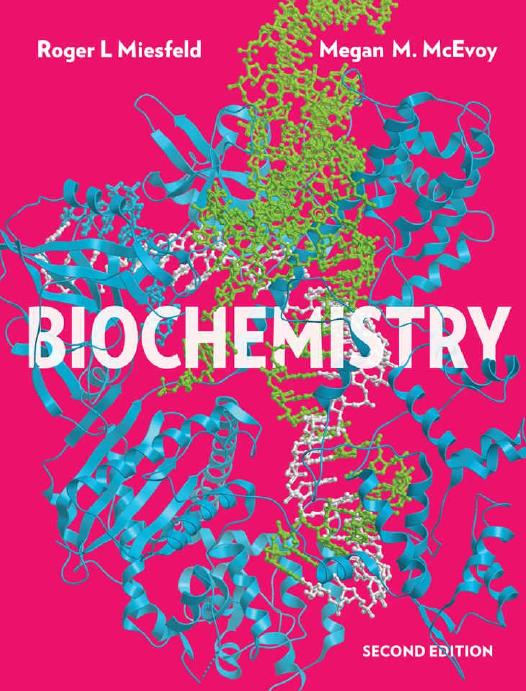
Product details:
ISBN-10 : 0393533492
ISBN-13 : 9780393533491
Author : Roger L Miesfeld, Megan M McEvoy
Drawing on more than three decades of teaching experience, Roger Miesfeld and Megan McEvoy created a book that is both a learning tool for students and a teaching tool for instructors—one that delivers exceptionally readable explanations, stunning graphics, and rigorous content. Relevant everyday biochemistry examples make clear why biochemistry matters in a way that develops students’ knowledge base and critical thinking skills. The second edition includes exciting new Your Turn critical thinking pedagogy and a thoughtful balance of biology and chemistry.
Biochemistry 2nd Table of contents:
1. Principles of Biochemistry
1.1 What Is Biochemistry?
1.2 The Chemical Basis of Life: A Hierarchical Perspective
1.3 Storage and Processing of Genetic Information
1.4 Determinants of Biomolecular Structure and Function
Chapter Summary
2. Physical Biochemistry: Energy Conversion, Water, and Membranes
2.1 Energy Conversion in Biological Systems
2.2 Water Is Critical for Life Processes
2.3 Cell Membranes Function as Selective Hydrophobic Barriers
Chapter Summary
3. Nucleic Acid Structure and Function
3.1 Structure of DNA and RNA
3.2 Genomics: The Study of Genomes
3.3 Methods in Nucleic Acid Biochemistry
Chapter Summary
4. Protein Structure
4.1 Proteins Are Polymers of Amino Acids
4.2 Hierarchical Organization of Protein Structure
4.3 Protein Folding
Chapter Summary
5. Methods in Protein Biochemistry
5.1 The Art and Science of Protein Purification
5.2 Working with Oligopeptides: Sequencing and Synthesis
5.3 Protein Structure Determination
5.4 Protein-Specific Antibodies Are Versatile Biochemical Reagents
Chapter Summary
6. Protein Function
6.1 The Five Major Functional Classes of Proteins
6.2 Conformational Changes via Small-Molecule Binding to Proteins: Myoglobin and Hemoglobin
6.3 Membrane Transport Proteins: Controlling Cellular Homeostasis
6.4 Structural Proteins: The Actin–Myosin Motor
Chapter Summary
7. Enzyme Mechanisms
7.1 Overview of Enzymes
7.2 Enzyme Structure and Function
7.3 Enzyme Reaction Mechanisms
7.4 Enzyme Kinetics
7.5 Regulation of Enzyme Activity
Chapter Summary
8. Cell Signaling Systems
8.1 Components of Signaling Pathways
8.2 G Protein–Coupled Receptor Signaling
8.3 Receptor Tyrosine Kinase Signaling
8.4 Tumor Necrosis Factor Receptor Signaling
8.5 Nuclear Receptor Signaling
Chapter Summary
9. Glycolysis: A Paradigm of Metabolic Regulation
9.1 Overview of Metabolism
9.2 Structures of Simple Sugars
9.3 Glycolysis Generates ATP under Anaerobic Conditions
9.4 Regulation of the Glycolytic Pathway
9.5 Metabolic Fate of Pyruvate
Chapter Summary
10. The Citrate Cycle
10.1 The Citrate Cycle Captures Energy Using Redox Reactions
10.2 Pyruvate Dehydrogenase Converts Pyruvate to Acetyl-CoA
10.3 Enzymatic Reactions of the Citrate Cycle
10.4 Regulation of the Citrate Cycle
10.5 Metabolism of Citrate Cycle Intermediates
Chapter Summary
11. Oxidative Phosphorylation
11.1 The Chemiosmotic Theory
11.2 The Mitochondrial Electron Transport System
11.3 Structure and Function of the ATP Synthase Complex
11.4 Transport Systems in Mitochondria
11.5 Regulation of Oxidative Phosphorylation
Chapter Summary
12. Photosynthesis
12.1 Plants Harvest Energy from Sunlight
12.2 Energy Conversion by Photosystems I and II
12.3 Photophosphorylation Generates ATP
12.4 Carbohydrate Biosynthesis in Plants
12.5 The Glyoxylate Cycle Converts Lipids into Carbohydrates
Chapter Summary
13. Carbohydrate Structure and Function
13.1 Carbohydrates: The Most Abundant Biomolecules in Nature
13.2 Important Biological Functions of Glycoconjugates
13.3 Biochemical Methods in Glycobiology
Chapter Summary
14. Carbohydrate Metabolism
14.1 The Pentose Phosphate Pathway
14.2 Gluconeogenesis
14.3 Glycogen Degradation and Synthesis
Chapter Summary
15. Lipid Structure and Function
15.1 Many Lipids Are Made from Fatty Acids
15.2 Triacylglycerols Are Energy Storage Lipids
15.3 Cell Membranes Contain Three Major Types of Lipids
15.4 Lipids Function in Cell Signaling
Chapter Summary
16. Lipid Metabolism
16.1 Fatty Acid Oxidation and Ketogenesis
16.2 Synthesis of Fatty Acids and Triacylglycerols
16.3 Cholesterol Synthesis and Metabolism
Chapter Summary
17. Amino Acid Metabolism
17.1 Nitrogen Fixation and Assimilation
17.2 Amino Acid Degradation
17.3 Amino Acid Biosynthesis
17.4 Biosynthesis of Amino Acid Derivatives
Chapter Summary
18. Nucleotide Metabolism
18.1 Structure and Function of Nucleotides
18.2 Purine Metabolism
18.3 Pyrimidine Metabolism
18.4 Deoxyribonucleotide Metabolism
Chapter Summary
19. Metabolic Integration
19.1 Metabolic Integration at the Physiologic Level
19.2 Metabolic Energy Balance
19.3 Nutrition and Exercise
Chapter Summary
20. DNA Replication, Repair, and Recombination
20.1 DNA Replication
20.2 DNA Damage and Repair
20.3 DNA Recombination
Chapter Summary
21. RNA Synthesis, Processing, and Gene Silencing
21.1 Structure and Function of RNA
21.2 Biochemistry of RNA Synthesis
21.3 Eukaryotic RNA Processing
21.4 RNA-Mediated Gene Silencing
Chapter Summary
22. Protein Synthesis, Posttranslational Modification, and Transport
22.1 Deciphering the Genetic Code
22.2 Biochemistry of mRNA Translation
22.3 Posttranslational Modification of Proteins
Chapter Summary
23. Gene Regulation
23.1 Principles of Gene Regulation
23.2 Mechanisms of Prokaryotic Gene Regulation
23.3 Mechanisms of Eukaryotic Gene Regulation
People also search for Biochemistry 2nd:
clinical biochemistry
define biochemistry
vasudevan biochemistry
urea cycle biochemistry
lippincott biochemistry
You may also like…
eBook PDF
(Ebook PDF) Biochemistry 2nd Edition by Raymond Ochs 0367461870Â 978-0367461874 full chapters
eBook PDF
(Ebook PDF) Human Biochemistry 2nd edition by Gerald Litwack 032391053X 9780323910538 full chapters

